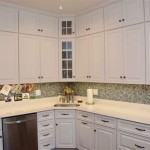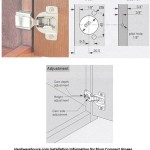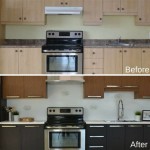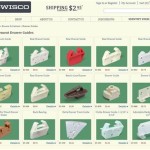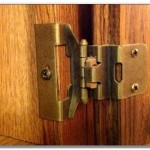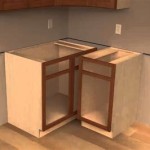Embracing Efficiency and Style: Kitchen Design in the 1930s
The 1930s, a period of economic hardship and social change, also saw significant advancements in kitchen design. With the rise of modernism and a focus on functionality, kitchens moved away from the ornate and cluttered style of the Victorian era, embracing a streamlined aesthetic that prioritized efficiency and convenience. This shift, driven by the advent of new appliances, materials, and design philosophies, resulted in kitchens that were not only practical but also stylish and inviting.
The Influence of Modernist Design
The modernist movement, with its emphasis on simplicity, functionality, and geometric forms, had a profound impact on kitchen design in the 1930s. This influence manifested in the use of clean lines, simple shapes, and a minimalist approach to decoration. Gone were the days of elaborate cabinetry and fussy ornamentation; instead, kitchens embraced a more streamlined aesthetic, with smooth surfaces, integrated appliances, and a focus on practical storage solutions. The goal was to create a space that was both functional and aesthetically pleasing, reflecting the modern values of efficiency and practicality.
One of the key features of modernist kitchens was the incorporation of built-in appliances. Refrigerators, ranges, and cabinets were often integrated into the overall design, creating a seamless and cohesive look. This approach not only improved the visual appeal of the kitchen but also made it more efficient, as appliances were easily accessible and integrated into the workflow of the space.
Embracing Efficiency and Functionality
The 1930s saw a shift towards a more efficient and functional approach to kitchen design. This was driven by the rise of new appliances and the increasing demand for a more practical and user-friendly space. The introduction of electric refrigerators, ranges, and dishwashers revolutionized household tasks, freeing up time and effort and making kitchens more efficient than ever before.
The concept of the "work triangle," a design principle that positions the refrigerator, sink, and stove in a triangular configuration to optimize workflow, emerged during this era. By strategically placing these key elements, kitchens could be designed to facilitate a more efficient and ergonomic cooking experience. Additionally, efficient storage solutions, such as built-in cabinets and drawers, became increasingly popular, helping to keep kitchens organized and clutter-free.
Materials and Finishes
The materials used in 1930s kitchens reflected the era's focus on functionality and durability. Stainless steel, with its sleek and hygienic qualities, became a popular choice for appliances and countertops. Other materials, such as linoleum, tile, and wood, were also widely used, offering a combination of practicality and aesthetic appeal. The use of light-colored finishes, such as white or cream, was favored to create a sense of spaciousness and cleanliness, in contrast to the dark and cluttered kitchens of the past.
Kitchens in the 1930s were often adorned with colorful accents, such as patterned tiles or bright fabrics. This injection of color added a touch of personality and liveliness to the space while complementing the streamlined aesthetic of modernist design. The overall effect was a kitchen that was both functional and stylish, reflecting the changing needs and tastes of the era.

A 1930s Green Kitchen Brightens Up In The Bronx Sweeten Com

1930s Kitchen Archives Nr Hiller Design

Los Angeles Modern Craftsman Mediterranean Architect Tim Barber Architects

100 Yrs Of Kitchen Style And What S Popular Today Cabinetcorp

Lauryn And Dennis 1939 Humble Kitchen Makeover 20 Photos Retro Renovation

A Thoughtful Renovation Vintage Kitchen Gets Bright And Airy New Look In 1930s Era Brick Tudor Home Spaces

Should I Go Mid Century Modern Or 1930 39 S Style Kitchens Forum Kitchen Cabinet Styles 1930s Retro

Thirties Vintage Kitchen Remodel In Minneapolis Mn

A Kitchen Remodel In Historic Filipinotown Los Angeles

1930s Interiors Weren T All Black Gold And Drama
Related Posts

